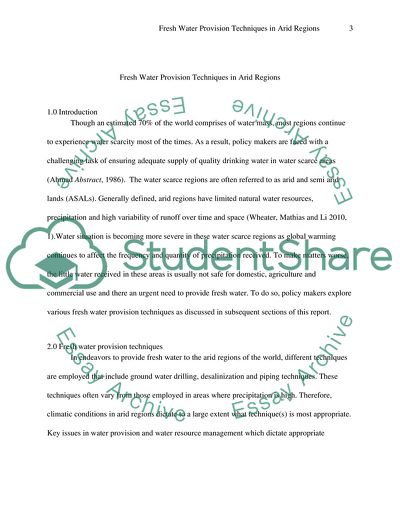Cite this document
(Fresh Water Provision Techniques in Arid Regions Term Paper Example | Topics and Well Written Essays - 1250 words, n.d.)
Fresh Water Provision Techniques in Arid Regions Term Paper Example | Topics and Well Written Essays - 1250 words. https://studentshare.org/english/1762008-write-a-report-assessing-the-feasibility-of-different-techniques-for-providing-fresh-water-to-arid-regions-of-the-world
Fresh Water Provision Techniques in Arid Regions Term Paper Example | Topics and Well Written Essays - 1250 words. https://studentshare.org/english/1762008-write-a-report-assessing-the-feasibility-of-different-techniques-for-providing-fresh-water-to-arid-regions-of-the-world
(Fresh Water Provision Techniques in Arid Regions Term Paper Example | Topics and Well Written Essays - 1250 Words)
Fresh Water Provision Techniques in Arid Regions Term Paper Example | Topics and Well Written Essays - 1250 Words. https://studentshare.org/english/1762008-write-a-report-assessing-the-feasibility-of-different-techniques-for-providing-fresh-water-to-arid-regions-of-the-world.
Fresh Water Provision Techniques in Arid Regions Term Paper Example | Topics and Well Written Essays - 1250 Words. https://studentshare.org/english/1762008-write-a-report-assessing-the-feasibility-of-different-techniques-for-providing-fresh-water-to-arid-regions-of-the-world.
“Fresh Water Provision Techniques in Arid Regions Term Paper Example | Topics and Well Written Essays - 1250 Words”. https://studentshare.org/english/1762008-write-a-report-assessing-the-feasibility-of-different-techniques-for-providing-fresh-water-to-arid-regions-of-the-world.


